You did it. You finally bought that dream lens for a winery shoot over in Naramata. Or maybe it was a slick new drone to really capture the jaw-dropping Similkameen landscape. That new gear feels amazing, doesn’t it? But what if I told you it’s more than just a tool for your art? It can be a massive tax-saving asset.
For creative pros like us here in the Okanagan and Similkameen, figuring out how to handle these big purchases on a tax return can feel like a total headache. Don’t sweat it. We’re going to break down exactly how it all works, in plain English, for creators just like you.
First Things First: Is Your Creative Passion a Business in the Eyes of the CRA?
Before we get into the fun stuff (deductions!), there’s one major hurdle you have to clear. The Canada Revenue Agency (CRA) needs to see your creative work as an actual business, not just a hobby. What’s the difference? It all boils down to a “reasonable expectation of profit.”
Basically, you have to be actively trying to make money. It can’t just be for fun. If you’re sending out invoices, marketing yourself, and have some kind of business plan (even a simple one), you’re probably good to go. But if you’re just taking pretty pictures for your family on weekends? Sorry, you can’t write off that new camera. It’s a fundamental first step you just can’t skip.
What’s the Difference Between a Latte and a Lens on Your Tax Return?
Picture this: you meet a potential client at a café in downtown Kelowna. That latte you buy them? That’s a current expense. You use it, it’s gone, and you can deduct the business portion of that cost in the very same year. Easy peasy.
Now, think about that brand-new lens. That’s a capital expense. You’re going to be using that thing for years to capture weddings in Penticton and events up in Vernon. It has a lasting benefit. Because of this, the CRA won’t let you deduct the entire cost all at once. Instead, you get to deduct a little piece of its cost over several years.
And how do you do that? Through a little something the tax folks call Capital Cost Allowance.
Your Camera Isn’t Just an Expense, It’s a “Capital Asset”: Unlocking CCA
This is probably the single most important concept for any creative with a bag full of gear. Capital Cost Allowance (CCA) is just the CRA’s fancy term for letting you write off (or depreciate) the cost of your big-ticket items over time. Instead of one huge deduction, you get to claim a percentage of the asset’s value, year after year.
Think of it like this: the CRA gets that your gear loses value as it gets older. It gets banged up, and new tech comes out. CCA is simply how you claim that loss in value as a business expense.
Finding Your Gear’s “Class”: A Quick Guide to CCA Classes
The percentage you can claim all depends on the asset’s “class.” The CRA has a category for pretty much everything you can think of. For creatives, these are the ones you’ll bump into most often:
- Class 50 (55% rate): This is for your computers, laptops, and tablets—what the CRA calls “general-purpose electronic data processing equipment.” If you bought it after March 18, 2007, it likely goes here.
- Class 8 (20% rate): This is the big one. It’s the catch-all for most of your creative tools: camera bodies, lenses, tripods, lighting, drones, and even your office desk and chair.
- Class 12 (100% rate): This class is for most software you buy outright (though subscriptions like Adobe Creative Cloud are usually a current expense). It also covers small tools that cost less than $500.
It’s also worth knowing about things like the Accelerated Investment Incentive (AII), which can sometimes let you claim more in the first year. It’s a perfect example of how tax rules can get tricky and have their own weird exceptions.
The “Half-Year Rule”: Why You Can’t Claim the Full Amount in Year One
Okay, here’s a weird rule that trips a lot of people up. In the year you buy a new piece of equipment, you can generally only claim CCA on half of its cost. Why? The CRA basically just assumes everyone bought their stuff halfway through the year, even if you grabbed it on January 2nd. It’s their way of standardizing the process.
Let’s Do the Math: A Real-World Example from a Penticton Photographer
Theory is fine, but let’s see how this plays out with real numbers. Let’s say we have Sarah, a wedding photographer based in Penticton.
- The Purchase: Sarah buys a new camera and lens combo for her business. The total hit to her wallet is $5,000. This gear is Class 8, so it has a 20% CCA rate.
- The Half-Year Rule: In year one, that weird rule kicks in. Sarah can only calculate her claim on half the cost: $5,000 / 2 = $2,500.
- Year 1 Deduction: Now she does the math for her first-year claim: $2,500 x 20% = $500. Boom. Sarah gets to deduct $500 from her business income this year.
- The Remaining Balance: For next year, she needs to know the remaining value, or what’s called the “Undepreciated Capital Cost” (UCC). That’s the original cost minus what she already claimed: $5,000 – $500 = $4,500.
- Year 2 and Beyond: In her second year, she can finally use the full remaining amount (the half-year rule is a one-time thing). Her claim will be $4,500 x 20% = $900. She deducts $900 in year two, and the process just keeps on rolling from there.
Beyond the Camera Bag: Other Write-Offs You Shouldn’t Overlook
Your gear is a huge deduction, but don’t stop there! As a creative running a business around here, you’ve got a ton of other potential write-offs:
- Business Use of Home: If you have a dedicated workspace at home, you can claim a portion of your rent, mortgage interest, utilities, internet, and even property taxes.
- Vehicle Expenses: Keep a logbook! Seriously. You can deduct the business portion of your gas, insurance, and maintenance for all those drives to client meetings in Kelowna or location shoots in Keremeos.
- Software & Subscriptions: Your Adobe Creative Cloud membership, website hosting, accounting software—it all adds up.
- Insurance & Professional Dues: That liability insurance you hope you never have to use? Deductible. Fees for professional groups? Also deductible.
- Travel: Heading to a workshop or flying out for a destination shoot? Keep those receipts.
- Marketing & Advertising: Your website, business cards, and any ads you run online.
Your Tax-Ready Checklist for a Stress-Free Season
Getting this right is all about being organized. Here’s a quick and dirty checklist to keep you on the straight and narrow:
- Keep every single receipt. Digital, paper, shoved in a shoebox—it doesn’t matter, just keep them.
- Use accounting software. Seriously, tools like QuickBooks or Wave will make your life so much easier.
- Get a separate business bank account. This makes bookkeeping about a thousand times cleaner. Don’t mix your business and personal spending.
- Remember, this is just the basics. Tax law gets complicated, fast, and your situation is unique. To really make sure you’re getting every deduction you’re entitled to (and staying on the CRA’s good side), the smartest move is to get some personalized advice. For guidance from a pro who actually gets the creative industry, you should get in touch with an expert accountant here.
Common Questions from Okanagan Creatives
I’m a graphic designer in Vernon. Can I claim CCA on my new high-end computer and monitors?
Absolutely! Your computer setup is a core capital asset for your business. It generally falls under Class 50, which has a pretty sweet 55% CCA rate. That means you get to write it off much faster than something like a camera.
What happens if I use my camera for both paid client work and personal family photos?
Super common question. You can only claim the business-use portion. You just need to figure out a reasonable split. If you use it 80% for work and 20% for taking pictures of your dog, you can only claim CCA on 80% of its cost. It’s a good idea to keep some notes or a log to justify your percentage if the CRA ever asks.
I sold my old lens on Facebook Marketplace to help pay for a new one. How does that affect my taxes?
Ah, now you’re getting into tricky territory. When you sell a business asset, you have to account for it in your CCA calculations. Depending on what you sold it for versus its remaining value on your books, you might have a “recapture” (where you have to add income back) or a “terminal loss” (an extra deduction). This is definitely an area where you want an accountant to help you get it right.
Is it better for my Similkameen video business to lease gear from a shop in Vancouver or buy it outright from a tax perspective?
Great question, and there’s a huge difference. Lease payments are a current expense, meaning you deduct 100% of the cost in the year you pay it. Buying it means you use the CCA system we talked about, deducting it slowly over time. Leasing is often better for your immediate cash flow, while buying builds an asset you own. The “better” choice really depends on your bank account and your long-term goals.
Can I write off the cost of a specialized workshop I took in Calgary to improve my videography skills?
Most of the time, yes! The CRA lets you deduct expenses for training that helps you maintain or improve the skills you need for your current business. The workshop fee, plus your travel and hotel, would likely be fully deductible as a current expense in the year you paid for it.

